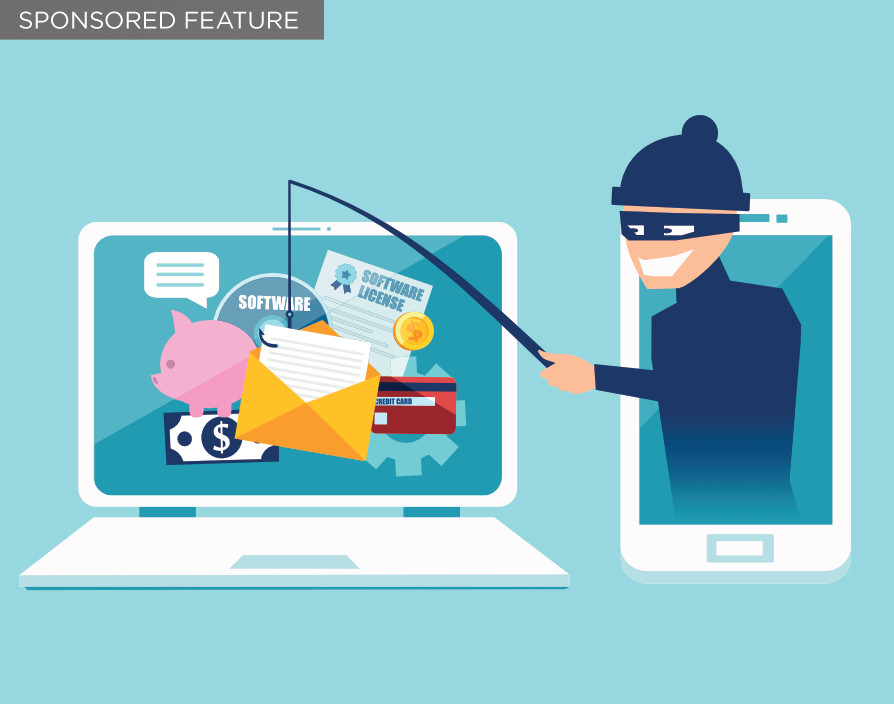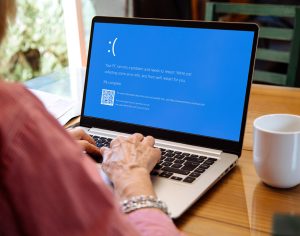Airport travel is stressful enough at the best of times. So the last thing travellers need when they’re in the lounge waiting for their flight is to have their personal and private data compromised because the network they’re using isn’t secure enough.
Hackers love
airports.
If you’re like many travellers, you’ve logged onto free airport Wi-Fi using your phone or laptop while waiting for your flight. And, like many travellers, you rarely even bat an eyelash before tapping ‘Connect’.
The problem is, that’s precisely what cybercriminals hope you’ll do. And many airports make it easier for them because most have public networks that aren’t protected by advanced security software. That means the chances of you being hacked increase.
How safe is your
network?
Go to any airport and you’ll likely see several different public Wi-Fi networks available. If you assume they’re all being overseen by the airport operator you may be assuming wrong. In reality some may actually be networks set up by cybercriminals hopeful that you will join so that they can capture all of your sensitive information.
At first glance malicious public Wi-Fi networks look like any other network. It’s only when you click on ‘accept terms and conditions’ to join that you may end up installing malware on your device. Unsurprisingly, airports have some of the highest potential for cyber attacks.
Don’t be held to
ransom
Airport travel is stressful enough at the best of times. So the last thing travellers need when they’re in the lounge waiting for their flight is to have their personal and private data compromised because the network they’re using isn’t secure enough.
When you unintentionally log on to a compromised public Wi-Fi network your browsing will not be private and you could be sending your information straight to a hacker. Login names and passwords, credit card information, search history, sensitive business data, and emails; all could be captured by someone else if the connection isn’t secure. And when you hand over information like that to a hacker, it could lead to identity theft, money stolen, ransomware attacks, and more.
Don’t share
information with your adversaries
As US cyber security intelligence company, Coronet, noted in a 2018 report on Wi-Fi security at America’s 45 busiest airports, business travellers connected to risky airport networks commonly share important information about their cloud-based-apps with adversaries.
Disturbingly, the report found that at San Diego International Airport – the least secure of those monitored – the probability of connecting to a medium risk network was 30%. And to a high-risk network it was a statistically significant 11%.
Don’t compromise your
company
Compromised data can trickle down through entire organisations, leading to operational disruption, financial losses and even reputational harm, among other damages, the report noted.
It added that while large enterprises are equipped to recover from such events, many mid-market and small businesses are ill prepared to remediate and regain business continuity with any haste. Indeed, six out of ten small businesses hit with a cyber attack go out of business within six months of the breach.
Create your own
hot-spot
One of the safest ways of using the Internet while you’re travelling is to take your own router with you. These devices – manufactured by companies such as NETGEAR – generally offer safe, fast and reliable wireless internet wherever you go, by providing a secure LTE connection that keeps your information safe, whether you are doing online banking or sending confidential work emails.
Make your own hotspot
In addition, Internet availability and speed can be a mystery when you’re travelling. You can’t always be certain that cell service will be available at your destination. And even if there is a viable signal, the internet speed might be too slow. This is where having your own hotspot comes in handy, without having to burn through your mobile phone’s monthly data plan.
And you can create a secure internet connection with fast speeds for multiple devices.
In NETGEAR’S case, for example, its Nighthawk Mobile Router lets you share your connection with up to 20 devices. So its benefits in the home environment are obvious too.
Another potential
security issue
Another potential security issue is so-called ‘juice jacking’ Like coffee shops, offices, hotel lounges and railway stations, airports have public charging stations encouraging mobile phone users to power up their devices when their batteries are running low.
Juice-jacking occurs when a mobile device is connected to a USB charging station, which, as well as charging the device, has also been illegally modified so that it copies data from the device being charged.
A modified charging station similarly has the capability of infecting your device with malware.
That these stations can do so is because USB cables offer both charging and data transfer capabilities.
Obvious solutions include taking your own power pack/extra battery with you; or avoiding USB charging altogether by using an electrical outlet, given electrical outlets don’t allow data to be transferred, including malware.
Protect your juice
Where a suitable electrical outlet isn’t available and USB charging needs must, powering off your device and plugging it in will solve the problem. As will a juice-Jack protector that immediately stops all data-sharing capabilities between your device and the USB port.
Given the technology required to compromise a public USB port is readily available, juice-jacking is a potential issue that can not be readily dismissed.
So, the next time you are thinking of doing some travelling, whether you are at an airport, on a moving train or elsewhere, bring your own secured network connection in your pocket and stay productive no matter where you are.
This article comes courtesy of NetGear helping the UK with the latest in wi-fi technologies click here for more information.
Share via:








































